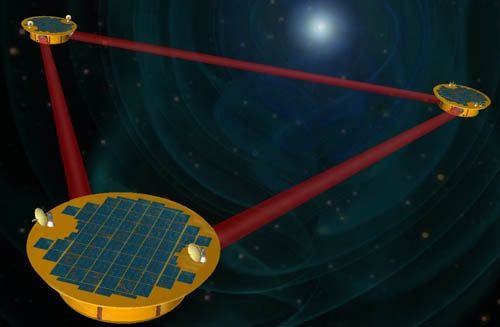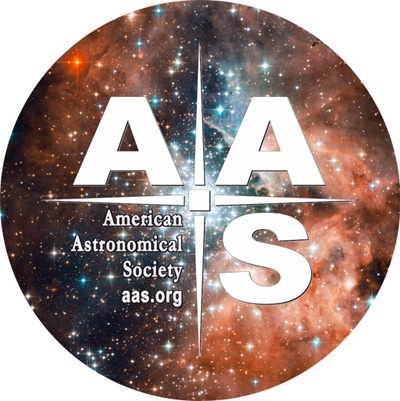27 March 2020
Tarini Konchady

Artist’s illustration of a binary star system consisting of two highly magnetized neutron stars. [John Rowe Animations]
Fast radio bursts (FRBs) are brief radio signals that last on the order of milliseconds. They appear to be extragalactic, coming from small, point-like areas on the sky. Some FRBs are one-off events, while others are periodic or “repeating”. The sources of FRBs are still unknown, but binary neutron star systems might be a piece of the puzzle.
Wanted: A Reliable Source of Repeating Fast Radio Bursts
Any proposed model for a repeating FRB must explain a number of observed behaviors. Among them are the following:
Repeating bursts from a given FRB source are consistent in frequency and overall intensity on the timescale of years.
Bursts exhibit small-scale variations in measures of the source’s magnetic environment.
FRBs seem to be preferentially hosted in massive, Milky-Way-like galaxies.

Example of an FRB from a repeating source, showing the intensity and various frequencies contained in a single burst (darker means more intense, lighter means less intense). The red lines just below and above 550 MHz and those near 450 MHz and 650 MHz indicate frequencies that were unused due to other radio signals interfering [adapted from the CHIME/FRB Collaboration, Andersen et al. 2019].

Binary neutron stars (BNSs) have been considered as possible solutions to the repeating FRB puzzle. Specifically, binary neutron star mergers might produce FRBs, along with gamma-ray bursts and gravitational waves. But how could BNSs produce repeating, consistent FRBs?
In a recent study, Bing Zhang (University of Nevada Las Vegas; Kyoto University, Japan) attempts to explain repeating FRBs using BNSs in a novel way. Instead of considering the neutron-star merger itself, Zhang examined whether the years leading up to the merger could produce repeating FRBs.
A Magnetic Dance
Repeating FRBs put out an enormous amount of energy over a few milliseconds — at least as much energy as the Sun puts out over three days. To put constraints on the average FRB-producing BNS, Zhang used the double-pulsar system PSR J0737-3039A/B (pulsars are fast-rotating neutron stars with strong magnetic fields), which is very well characterized in terms of its component stars and overall structure.
Aside from having enormous amounts of rotational energy intrinsically and in their orbits, BNSs also have strong magnetic fields. These magnetic fields are key to the production of FRBs in Zhang’s scenario — as the neutron stars orbit each other, their magnetic fields interact, possibly triggering a flow of particles that would produce FRBs.
On the scale of centuries or even decades pre-merger, these triggers could occur repeatedly and consistently, satisfying a key requirement for repeating FRBs. This picture of interacting magnetic fields would also explain the small-scale variations in the magnetic environment measures, and there is an overlap between the sorts of galaxies that host FRBs and those that host the gamma-ray bursts that could be associated with BNS mergers.
By Way of Gravitational Waves
An observational test for this scenario is the detection of gravitational waves from an FRB source. Space-based gravitational wave detectors, such as the Laser Interferometer Space Antenna, would be well-suited for this.


Ground-based detectors would also play a role, picking up waves from the BNSs actually merging.


And of course, the more FRBs we observe, the more we can narrow down their properties and sources. Fortunately, the Canadian Hydrogen Intensity Mapping Experiment (CHIME) is predicted to detect 2 to 50 FRBs per day, and other radio telescopes are hard at work as well. So maybe this FRB mystery will be solved sooner than we think!
Citation
“Fast Radio Bursts from Interacting Binary Neutron Star Systems,” Bing Zhang 2020 ApJL 890 L24.
https://iopscience.iop.org/article/10.3847/2041-8213/ab7244
See the full article here .

five-ways-keep-your-child-safe-school-shootings
Please help promote STEM in your local schools.

AAS Mission and Vision Statement
The mission of the American Astronomical Society is to enhance and share humanity’s scientific understanding of the Universe.
The Society, through its publications, disseminates and archives the results of astronomical research. The Society also communicates and explains our understanding of the universe to the public.
The Society facilitates and strengthens the interactions among members through professional meetings and other means. The Society supports member divisions representing specialized research and astronomical interests.
The Society represents the goals of its community of members to the nation and the world. The Society also works with other scientific and educational societies to promote the advancement of science.
The Society, through its members, trains, mentors and supports the next generation of astronomers. The Society supports and promotes increased participation of historically underrepresented groups in astronomy.
The Society assists its members to develop their skills in the fields of education and public outreach at all levels. The Society promotes broad interest in astronomy, which enhances science literacy and leads many to careers in science and engineering.
Adopted June 7, 2009
